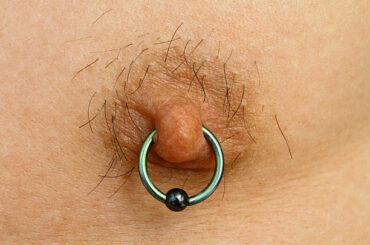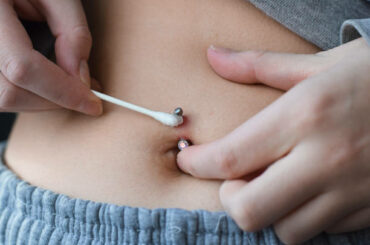Is it a bad idea to get multiple piercings in one sitting? Double, triple or even quadruple piercings are becoming very popular. What you can get has no limits, but there are some precautions you should take if you get pierced more than once. Everything you need to know about having multiple piercings at once is provided here. It is, and I’m here to tell you so!
Contents
Is it a bad idea to get multiple piercings in one sitting?
Yes, you can get multiple piercings in one session to give you a quick answer.
Your tolerance for pain, the location of the piercings, and your general health will all affect how many piercings you can have at once
Can you do multiple piercings at once?
Some piercings are very safe in multiple settings.

- Ear piercings are generally safe in multiple settings.
- Navel piercings are generally safe in multiple settings.
- Eyebrow piercings are generally safe in multiple settings.
- Lip piercings are generally safe in multiple settings (but don’t get too aggressive with them).
Getting multiple piercings at once can be overwhelming.
Once you’ve decided it’s time to get multiple piercings, there are some things to consider: the piercing process itself, how much pain you’re willing to endure, and whether or not all of your piercings can heal properly.
While these factors can vary from person to person and situation to situation (for example: if someone is getting their belly button pierced right now), they often come down to one central question: Is this something I can handle?
Suppose your answer is yes—especially if it’s “yes” even though we haven’t tried getting them done yet—congratulations! You should get started on this journey into adulthood as soon as possible! But if not. Well then, maybe waiting isn’t such a bad idea after all?
Your piercer may not be able to do multiple piercings of the same sort at once.
Sometimes, your piercer needs more experience or tools to perform more than one piercing at a time. In other cases, it might be that there are too many things in their life right now, and they only have so much time for you before something else comes up (or after).
What to be aware during multiple piercings?
You should be aware of some possible issues that could come from multiple piercings.
Swelling:
Some people experience swelling after getting multiple piercings, but this is not always the case. The swelling depends on how the procedure decreases blood flow to your body and how long it takes for new tissue cells to form to replace what has been lost. It’s also important to mention that there are many variations in how much swelling you might experience; some people may have minimal redness or no discomfort, while others may experience significant pain and discomfort during healing reactions.
Pain:
Another potential side effect of multiple piercing procedures is pain—especially when placing jewelry on sensitive areas like ears or genitals (both common areas for piercing). This can make daily activities difficult, if not impossible, due to severe headaches caused by throbbing nerve sensations that feel like electrical shocks throughout one’s head when touched lightly with fingers pressing around inside ears.”
Avoid one sitting if your piercer can’t guarantee good hygiene and quality results for all your piercings.
Someone who has had numerous piercings in one location on their body may have experienced swelling or other healing problems. If you later decide to re-pierce that area, these issues affect how smoothly everything goes.
Most reliable piercers will perform up to 3 or 4 piercings in a single session. Pick a piercer you can trust if you intend to have both ears pierced simultaneously. They will be able to help you through the process as long as you express how you’re feeling.
Is it a bad idea to get multiple piercings in one sitting?
Getting multiple piercings at once can be an exciting and empowering experience, but it’s important to prioritize your health and safety. Here are some key things to be aware of when getting multiple piercings:
- Choose a Professional Piercer:
- Ensure that your piercings are done by a licensed and experienced professional piercer who works in a clean and reputable studio. Check reviews and ask for recommendations.
- Sterilization:
- Make sure that the piercer uses sterilized equipment, including needles, jewelry, and any other tools. This helps prevent infections and complications.
- Quality Jewelry:
- Opt for high-quality jewelry made from materials such as surgical steel, titanium, or gold. This reduces the risk of allergic reactions and promotes healing.
- Aftercare Instructions:
- Follow the aftercare instructions provided by your piercer diligently. This typically involves cleaning the piercings with a saline solution and avoiding touching them with dirty hands.
- Avoid Overloading the Body:
- Consider spacing out your piercings to allow your body enough time to heal. Getting too many piercings at once can put stress on your immune system and slow down the healing process.
- Pain Management:
- Be prepared for some discomfort or pain, especially immediately after the piercings. Take any prescribed pain relievers as directed and avoid over-the-counter products that may thin the blood.
- Infection Signs:
- Keep an eye out for signs of infection, such as excessive redness, swelling, pus, or increased pain. If you notice any of these symptoms, contact your piercer or a healthcare professional.
- Hygiene:
- Maintain good personal hygiene during the healing process. Avoid submerging the piercings in bodies of water like pools, hot tubs, or baths, as they may contain bacteria.
- Clothing Considerations:
- Choose loose-fitting clothing that won’t irritate or snag on your piercings. This is especially important for piercings in areas like the ear, where headphones or hats might cause friction.
- Healing Time:
- Understand the typical healing times for each piercing. Healing times can vary, and it’s crucial to be patient and allow your body the time it needs to recover.
If you have any concerns during the healing process, don’t hesitate to reach out to your piercer or seek advice from a healthcare professional. Proper aftercare and attention to your body’s signals will contribute to a successful and enjoyable piercing experience.
Conclusion
Although you might anticipate that healing more than one piercing would be more challenging than just one, the procedure will be the same in both cases. If you wear a lot of new jewelry, you should be aware of it and cautious not to snag or tear it. Get lots of rest, choose a piercer you can trust, and eat before the procedure.
This article was helpful to you in learning more about getting several piercings at once. While it may seem like a great idea, there are some risks involved that you should be aware of before deciding to get multiple piercings done in one sitting. If all goes well, your body will appreciate the new additions, and they will look great on your body!





